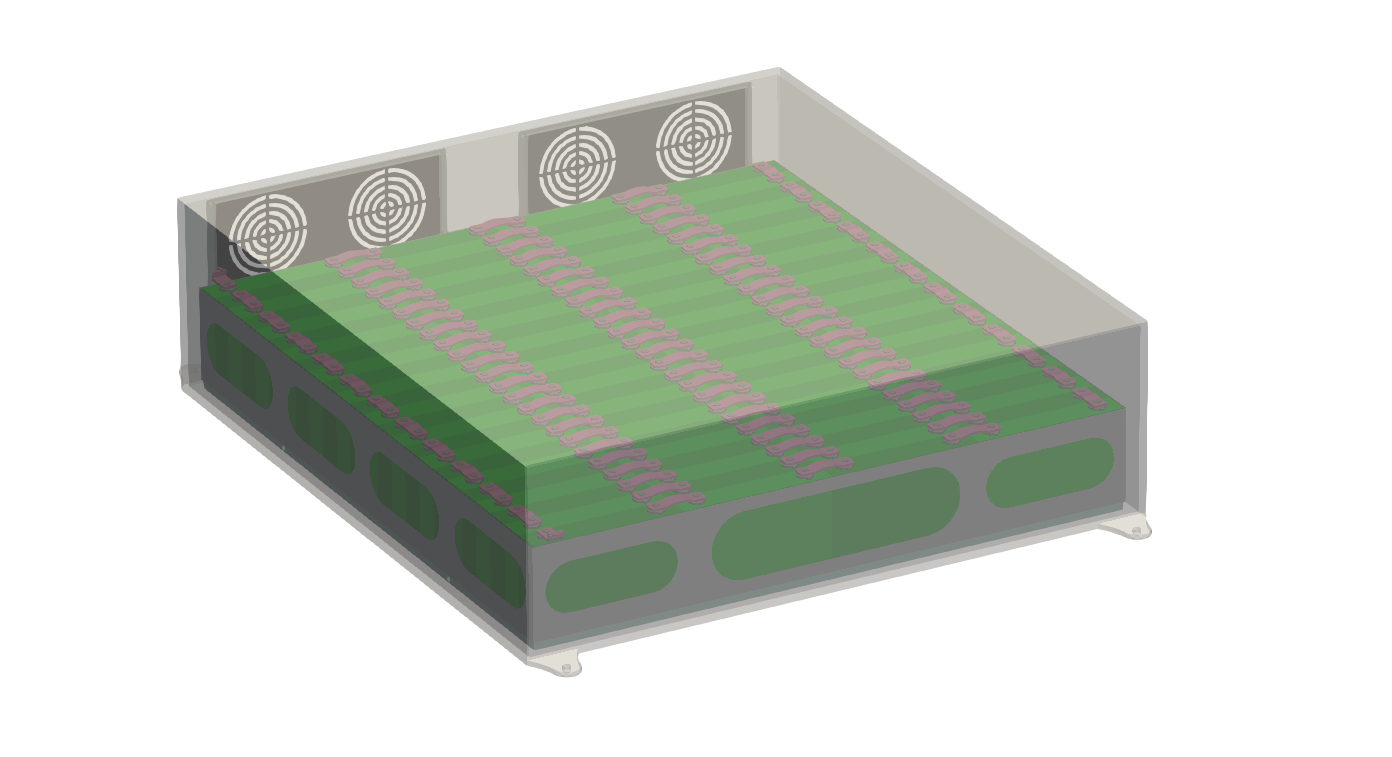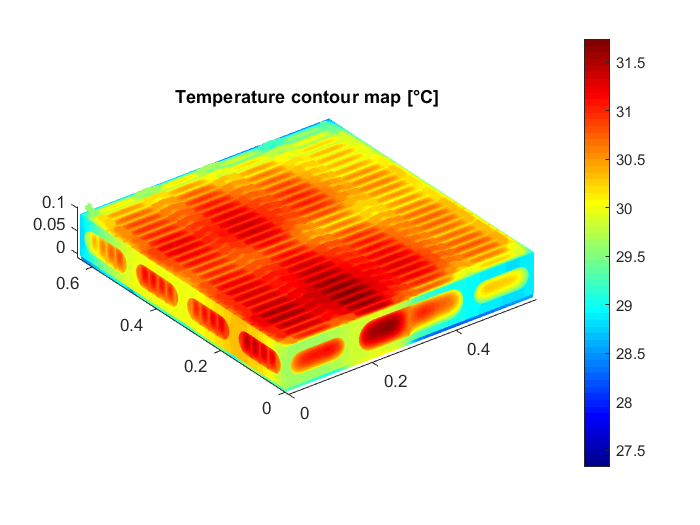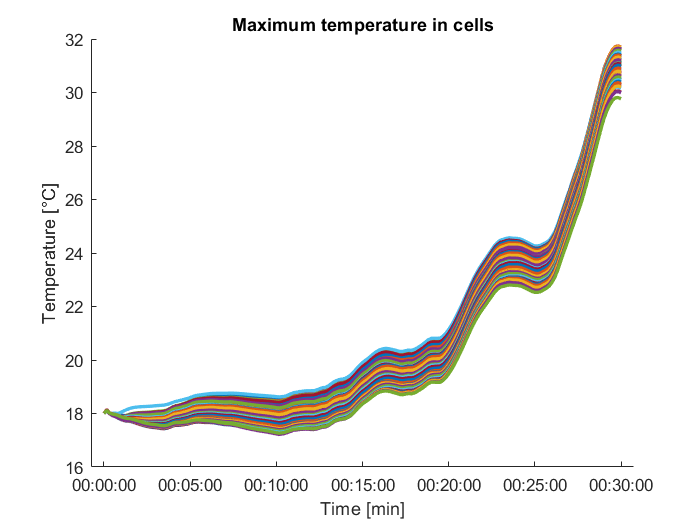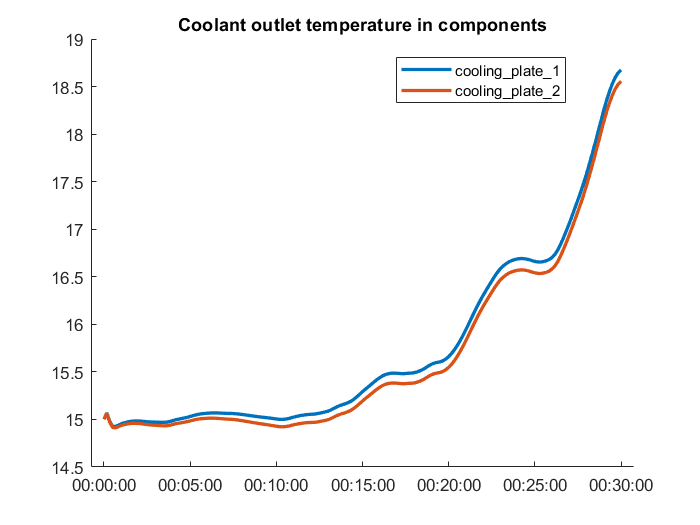Electric car Q-Bat use case
Heat transfer in an electric car’s battery pack modeled in Q-Bat
⬇️ Please use this link instead of the download button: Download link ⬇️
Run battery_pack_96S1P.m and electric_car_livescript.mlx to get started
- Please visit the Q-Bat and QuickerSim page to learn more about modeling heat transfer in 3-D systems.
This repository shows how to model heat transfer in an electric car’s battery pack in Q-Bat from QuickerSim. The model consists 96 lithium prismatic cells (96s1p), terminals, connectors, holders, casing and cooling plates and is connected to a reduced-order model (ROM) to model heat transfer in 3D geometry. Two cooling plates are used to maintain the optimum temperature range in the battery packs.
In this example, it is shown how to check for a mesh independent solution. Three meshes with the different numbers of elements are prepared and used in simulation to compare the results.
Simulation Model
Simulation Results
Cite As
QuickerSim (2024). Electric car Q-Bat use case (https://github.com/QuickerSim/Electric-car-Q-Bat-use-case/releases/tag/1.0.1), GitHub. Retrieved .
MATLAB Release Compatibility
Platform Compatibility
Windows macOS LinuxTags
Community Treasure Hunt
Find the treasures in MATLAB Central and discover how the community can help you!
Start Hunting!Discover Live Editor
Create scripts with code, output, and formatted text in a single executable document.
src
| Version | Published | Release Notes | |
|---|---|---|---|
| 1.0.1 | See release notes for this release on GitHub: https://github.com/QuickerSim/Electric-car-Q-Bat-use-case/releases/tag/1.0.1 |
||
| 1.0.0 |







